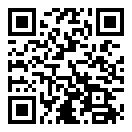DAY One
07:00 – 07:30 / Arrival & Registration
07:30 – 08:00 / Introduction and Overview of the Seminar’s Objectives
08:00 – 09:30 / Connecting the Disconnected: Schools and the Increasingly Innovative World
- Innovation eliminates traditional-structured-routine jobs
- The global need for creative problem solvers
- How schools kill creativity
- Fostering and nurturing creativity
Empowered by Tinkering: Learning by Doing
Tinkering is an ethos used by thousands of educators provide students opportunities to design, invent, innovate and make. As students tinker with materials, they are constantly putting things together and taking them apart. They are learning through play—trying out new ideas, exploring alternate paths, making adjustments, imagining new possibilities, expressing themselves creatively. In the process, they learn about the creative process and develop as creative tinkering.
- How students really learn?
- Which computational and programming concepts should be introduced?
- What games and exercises enhance teaching concepts in fun, authentic and creative ways?
- How programming ideas, programming languages and robotics support concrete ways of thinking?
09:30 – 09:45 / Coffee break
09:45 – 11:45 / Introducing Key Programming Concepts to All Educators that are even Non Computer Specialists
- Introduce the fundamentals of programming and computational thinking
- Instil confidence in working with technology
- Use computational thinking in broad and diverse range of disciplines
- Engage student understanding through working on projects, both unplugged and on a computer, using the Scratch programming language
- Develop ideas for using object-oriented programming in the classroom
- Introduce the “Internet of Things”
- How Arduino adventures foster creativity and collaboration.
Case study: Creative Coding Through Games and Apps
Creative coding through games and apps sets students of early secondary to higher grades on a journey to become well prepared for life and careers in the contemporary world. At the core of the learning experience in creative coding are the beliefs that students invest when they can be creative, learn best by doing, and that social engagement can be a powerful accelerant to learning. These beliefs are brought to life by using leading-edge technology to create an interactive and immersive learning experience focused on solving real-world problems that are relevant to students’ lives.
11:45 – 12:15 / Lunch break
12:15 – 14:15 / Using Simple Electronics
- Develop knowledge of simple creative electronics
- Set up your Raspberry Pi and write your first program using block-structured programming language
- Developing a new generation of tools, activities, and spaces to support playful investigation and experimentation while integrating digital and physical materials
- Get involved in activities that enable student participation in new types of inquiry into light, sound, motion, and even storytelling
- Demonstrate “light play” examples where students can use program colored lights and moving objects to create dynamic patterns of shadows
14:15 – 14:30 / Coffee break
14:30 – 15:30 / Practical Group Work 1: Making It Happen
Moving from vision to reality by developing initiatives and strategies, teachers from all disciplines and levels can get involved, achieve learning goals and share individual experiences.
DAY Two
7:00 – 7:30 / Arrival
7:30 – 8:00 / Recapitulation of first day
8:00 – 09:30 / From Computational Thinking to Programming and Robotics
1. Learn to Code, Code to Learn.
- The benefits of using the algorithmic process for all disciplines. How students can use mathematical and computational ideas to enhance their understanding and to make connections across disciplines.
- How students can formulate strategies to solve problems, design projects, communicate ideas and collaborate.
- How students can reuse and remix coding projects and any other kinds of projects (from Math, Science, Arts, Music) to innovate and excel. We will present how students use existing solutions to potentially create things much more complex than they could have created on their own.
2. Computational thinking.
- How computation thinking can be used not just for computer scientists but for everyone, regardless of age, background, interests or occupation.
Case study: “Remixing and Reusing” A Pathway for Learning.
Presenting the Scratch Community of projects and the “Remixing” theory that was tested quantitatively using data from more than 2.4 million multimedia programming projects shared by more than 1 million users in the Scratch online community. First, we will be presenting that users who remix more often have larger repertoires of programming commands even after controlling for the numbers of projects and amount of code shared. Second, we will be showing that exposure to computational thinking concepts through remixing is associated with increased likelihood of using those concepts. These results support theories that young people learn through remixing, and have important implications for designers of social computing system.
Remixing has been defined as the reworking and combination of existing creative artifacts, usually in the form of music, video, and other interactive media. The phenomenon is widespread, culturally significant, and controversial as it provokes important questions about ownership and authorship. Questions like what is reasonable to borrow from others? How do you give appropriate credit to others? How do you assess cooperative and collaborative work?
09:30 – 09:45 / Coffee break
09:45 – 11:45 / Robotics: The New Literacy and Powerful Learning Tool Across All Disciplines
Robotics is a great way to get students excited about science, technology, engineering, and math (STEM) and to engage them in complex, strategic problem-solving. It introduces students to concepts and skills that are needed for understanding the intelligent, highly interactive information-based technology of the future.
- Introducing the STEM -> STREAMS approach with LEGO MINDSTORMS® Education Robotics in High Schools
- Using LEGO components, sensors, and NXT module concepts, such as gear ratios, friction, potential energy, kinetic energy, and oscillations
 Chryso ChristodoulouCEO – Founder
Chryso ChristodoulouCEO – Founder


